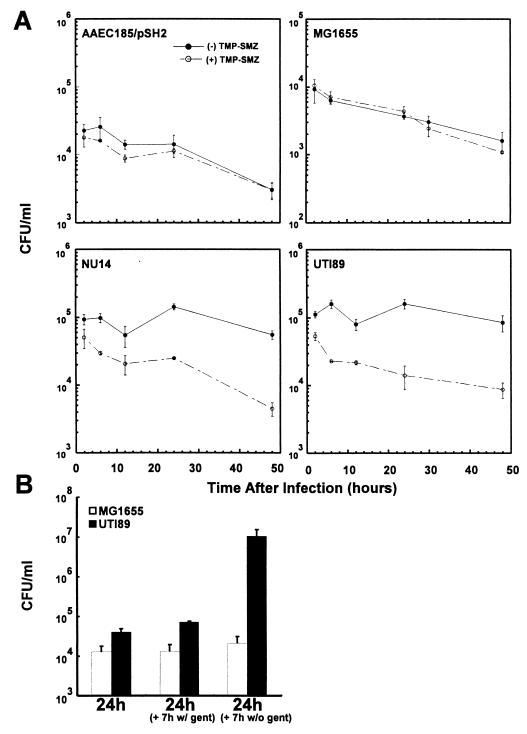FIG. 4.
In vitro intracellular persistence and reemergence of UPEC. 5637 bladder epithelial cells were infected with uropathogenic isolates (UTI 89 or NU14) or with a laboratory K-12 strain (AAEC185/pSH2 or MG1655) that expresses type 1 pili, and intracellular growth assays were performed in the presence of gentamicin. (A) Intracellular levels of UTI89 and NU14 remained constant for 48 h in the presence of gentamicin alone. In contrast, intracellular titers of the K-12 strains decreased significantly during the same time interval. Inhibition of bacterial replication using the bacteriostatic antibiotics TMP-SMZ greatly reduced the ability of the clinical isolates to survive intracellularly. TMP-SMZ had no effect on the persistence profile of the K-12 strains. (B) Bacterial fluxing assays indicate that intracellular UPEC isolates can exit host 5637 bladder cells. Following a 24-hour incubation of infected host cells in the presence of gentamicin, the cell culture medium was replaced with fresh medium with and without gentamicin. Within 7 h after removal of gentamicin (to allow extracellular bacterial growth), the titers of total extra- and intracellular UTI89 cells greatly increased. In contrast, the titers of MG1655 remained nearly unchanged regardless of the absence or continued presence of gentamicin.

